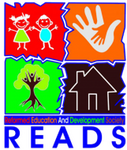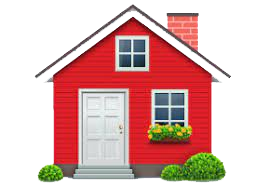SOCIO-ECONOMIC UPLIFTMENT PROGRAM
This project was undertaken by the Young Married-men Group traditionally known as ‘Pavanglai’.
Project overview
|
Intervention area |
State |
District |
Block |
Villages |
|
|
Manipur |
Pherzawl |
Tipaimukh |
Parbung |
|
Manipur |
Churachandpur |
Saikot |
Rengkai, Muolvaiphei, Saikot |
|
|
Assam |
Cachar |
Lakhipur |
Hmarkhawlien |
|
|
TOTAL |
02 |
03 |
03 |
05 |
Results and achievements
- The target congregation cultivate a sense of missional thoughts for helping others.
- Young Married-men Group (YMG) from target local congregations are now working on fund raising activities and initiated helping hand program to the neediest such as widow, orphans and children from vulnerable families within their local congregations.
- Conduct various programs such as, Resource Mapping with Local congregations, Sensitization of Local congregations for improving group dynamics, Motivational meeting for Local congregations on diaconal ministry,
YMG have carried out various activities in serving the needy. They could achieve the following activities as stated below:
|
NAME OF THE TARGET GROUP |
HELPING HAND INITIATIVES |
|
Saikot YMG |
Distribution of 20 Layer chicks to 20 households |
|
Muolvaiphei YMG |
Making of furniture and distributed to 6 families |
|
Hmarkhawlien YMG |
Distribution of 20 kgs of rice to 20 needy families and contribution of 1 month school fees to 25 children. |
|
Rengkai YMG |
Assisting 16 families in the application of Govt. Health Card |
|
Parbung YMG |
Ongoing planning stage |
INTEGRATED COMMUNITY DEVELOPMENT PROGRAM
Table showing existing active Women self-help group (WSHG)
|
S.No |
Name of WSHG |
No. of Village |
No. of Members |
|
1 |
Benia |
Mualsan |
10 |
|
2 |
Zozam |
Mualsan |
10 |
|
3 |
Lily |
Mualsan |
10 |
|
4 |
Faith |
Mualsan |
10 |
|
5 |
Hope |
Sumtukphai |
12 |
|
6 |
Deborah |
Sumtukphai |
11 |
|
7 |
Venglai WSHG |
Mualpi |
10 |
|
8 |
Mualkot WSHG |
Mualkot |
5 |
|
9 |
Naomi |
M.Lhahvom |
7 |
|
10 |
Ruth |
M.Lhahvom |
6 |
|
11 |
Evergreen |
Saipum |
5 |
|
12 |
Nazareth |
Saipum |
10 |
|
13 |
Ruth |
Saipum |
10 |
|
14 |
Lunglut |
Saipum |
8 |
|
15 |
Tunnu |
Bohlui |
8 |
|
16 |
Tomngai |
Vengnomphai |
7 |
|
17 |
Lydia |
Dumsau |
8 |
|
18 |
Esther (V&K) |
Valpakawt |
6 |
|
19 |
Agape |
Toljang Kuki |
8 |
|
20 |
Amazing |
M.Shimoul |
7 |
|
21 |
Agape |
M.Shimoul |
5 |
|
22 |
Tabitha |
Ngurte |
5 |
|
|
TOTAL |
|
178 |
Results and achievements
- 17 WSHG were trained in food preservation and processing.
- 7 most promising WSHG who developed business plans were provided with start-up assistance to continue their income generating business.
- WSHG’s were able to continue their saving contribution, internal lending and income generating activities amid the pandemic.
- Farmers availed pesticides and different types of high yielding variety seeds (Rabi) under the District Agriculture Department (through the initiative of program staff)
- Through the initiative of VA, installation of water sources, PMAY, Ration Card, Health Card etc. were provided to the village.
RECOVERY & RESILIENCE EFFORT TOWARDS RISK REDUCTION & SUSTAINABLE DEVELOPMENT ($RSD)
This project aims at sustainable development by creating an enabling environment through an integrated effort of recovery and resilience actions for the most vulnerable community in Assam and Manipur States of North-eastern region of India undertaking disaster risk reduction measures.
During the pandemic lockdown beginning from March 2020, millions walked back home carrying whatever they had, for thousands of miles, in hunger, in frustration, in sickness, injuries and even death. Hundreds of them could not make it to their homes.
In Northeast India, the pandemic exposed the already vulnerable population, economy and the entire system. Poor scope for industrialization in those tender hills, poor road and other infrastructure, low or no connectivity devoid the region from mainstream investments in any major economic activities for decades.
Besides pandemic, severe cyclonic storms, floods, landslides as annual events and increasing frequencies of seismic events causing further risks and vulnerabilities for the people living there.
The pandemic raised the risks further by pushing the entire existing poor economy slowed down with increasing challenges in livelihood and health risks.
The population in the project locations live with perennial disaster events like floods, storms, landslides & earthquakes etc as well as other man-made events. This leads to raising their level of vulnerability to livelihood, reducing existing coping capacities (Every individual and community has their natural coping capacity that cannot be undermine) that need to be addressed alongside livelihood restoration program.
This project is being implemented in 2 locations of the States of Assam and Manipur in the North-eastern Region of India (NER), where marginalized tribal scheduled communities were heavily affected by the pandemic as well as natural disaster (floods, storms & earthquakes), drastically affecting their livelihoods.
During pandemic lock down, humedica e.V supported 12000 individuals with dry food rations for 2 months and covid prevention program from September to December 2020.
The statistical chart displays the Poverty level in Assam and Manipur in comparison to the national level highlighted in orange colour bars below-
Livelihood recovery components:
Most vulnerable families identified who received assistance for restoration of their livelihood – The livelihood assistance program provided various supports like - piglets for rearing, looms for weavers, tailoring equipment, tea-shop, and other means of livelihood existing among the tribal communities (Toolkits for kitchen gardening, improved seeds, manures etc.)
Results and achievements
- Beneficiaries enriched with the understanding of the starting up of petty businesses through trainings provided on the Entrepreneurship Development.
- The beneficiaries shared portion of their gains with the beneficiaries-in-waiting from the resources received from the project through the Beneficiary Chain System (BCS).
- A total of 298 beneficiaries were benefitted with the following material supports- 151 beneficiaries received piglets; 20 beneficiaries received sewing machines and 134 beneficiaries received weaving and various other supports like: poultry, duck, small tea stall, electrical equipment, salon equipment, carpentry tools, broom & kitchen gardening, goats, fingerlings etc. Pictures below are of the beneficiaries
- 271 most vulnerable families received livelihood assistance like - piglets for rearing, looms for weavers, tailoring equipment, tea-shops, and other means of livelihood existing among the tribal communities.
- There were 2 sessions organized on livelihood and entrepreneurship development with local as well as national level resources and success stories with the objective to understand and build perspective to train the beneficiaries in Assam and Manipur locations.
- Multiplication of beneficiaries added as the first beneficiaries began to share portions of their gains with the beneficiaries-in-waiting (BiW), from the resources received from the project, through the Beneficiary Chain System (BCS). (138 families are expected for benefitting the BCS provision)


